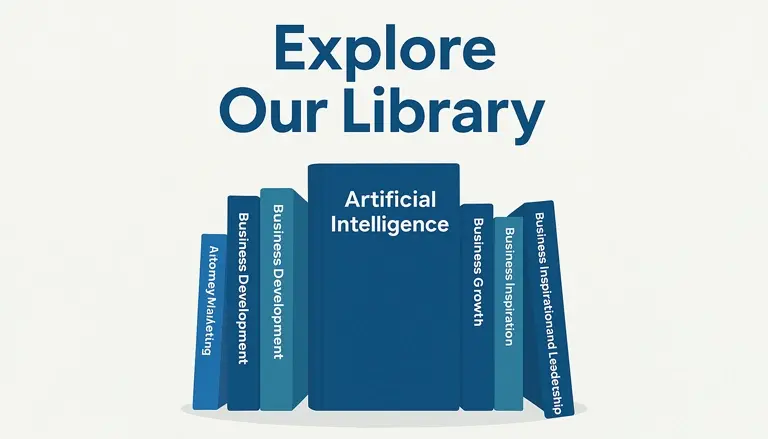

Data-Driven Lead Generation: How to Leverage Analytics for Higher Conversions
Posted March 24, 2025 by Kevin Chern
“Without data, you’re just another person with an opinion.” — W. Edwards Deming
That quote hits differently when you’re looking at a flatlining lead pipeline, doesn’t it?
Gut instinct could help you get through a networking event in the modern business jungle, but it won’t optimize your ad spend, align your sales force, or predictably expand your income. Data will.
If you’re still relying on intuition to drive your lead gen strategy, you’re not playing to win—you’re playing not to lose. And there’s a big difference. Because let me tell you those who know how to leverage analytics aren’t guessing. They’re scaling. They’re converting. They’re winning.
Let’s break down what it really means to use data-driven lead generation and how you can harness analytics to convert more leads, faster and smarter.
The Case for Data-Driven Lead Generation
Let’s start with the brass tacks: what does “data-driven” actually mean in the context of lead generation?
It means moving from assumptions to action. It means using cold, hard numbers to validate every step of the customer journey from first impression to closed deal. And it means tightening the loop between marketing and sales until there’s no slack left.
A 2023 report from McKinsey & Co. found that companies that integrate data across marketing and sales functions see up to a 15% lift in revenue growth.¹ That’s not marginal. That’s transformation.
The problem? Most companies collect data, but don’t know how to use it.
Let’s fix that.
Step 1: Define What a “Qualified Lead” Means to You
You’d be surprised how many teams argue over what a lead even is. Let alone a qualified one.
Start by setting firm criteria for your MQLs (Marketing Qualified Leads) and SQLs (Sales Qualified Leads).
Ask:
- What behaviour indicates interest?
- Which channels drive your highest-value leads?
- What demographics or firmographics correlate with closed-won deals?
This isn’t just a marketing question. Your sales team should be elbow-deep in this conversation. Cross-functional clarity here is where scalable lead gen begins.
Pro tip: Use historical CRM data to analyze lead-to-customer conversions. Find commonalities and use those as benchmarks.
Step 2: Build a Centralized Lead Tracking System
You can’t optimize what you can’t measure. If your lead data is scattered across spreadsheets, email inboxes, and rogue whiteboards stop. You need a single source of truth.
Invest in a CRM that integrates seamlessly with your website, ads, email platform, and analytics tools. This isn’t just about hygiene. It’s about real-time decision-making.
According to Salesforce, **79% of marketing leads never convert due to lack of lead nurturing.**² A good CRM closes that gap by surfacing insights and automating workflows based on user behavior.
Think of it as your mission control center. Every data point lives there. Every action starts from there.
Step 3: Map the Customer Journey—and Plug the Holes
Ever driven down a road full of potholes? That’s what a leaky funnel feels like.
Use tools like Google Analytics 4, Mixpanel, or Hotjar to track where users drop off. Where are leads bouncing? Which CTAs fall flat? Where does intent spike but conversions stall?
Look for high-exit pages, low-converting forms, or email sequences with poor click-through rates. And fix them.
Stat to chew on: Companies that actively manage their funnels see a 53% higher conversion rate from lead to opportunity. That’s not magic. That’s measurement.
Step 4: Layer in Predictive Lead Scoring
Here’s where the fun starts.
Predictive lead scoring uses machine learning to identify which leads are most likely to convert—based on real behavioral data and past patterns.
Let’s say a lead visited your pricing page twice, opened three nurture emails, and downloaded a whitepaper. That’s more valuable than someone who just signed up for your newsletter and ghosted.
Using tools like HubSpot, Salesforce Einstein, or MadKudu, you can assign point values automatically—and help your sales team focus on the 20% of leads that drive 80% of results.
According to Forrester, companies using predictive analytics for lead scoring increase their lead conversion rates by **up to 20%.
Step 5: Split-Test Relentlessly
Most campaigns don’t fail. They just weren’t optimized.
If you’re running the same ads, emails, and landing pages month after month—you’re leaving money on the table. Always be testing:
- Subject lines
- CTA placements
- Form lengths
- Hero image variants
- Ad headlines
Use Google Optimize, VWO, or Optimizely to run A/B or multivariate tests and track conversions.
According to Invesp, companies that adopt A/B testing see up to 50% more conversions compared to those that don’t.
Let the audience tell you what works. Data doesn’t lie.
Step 6: Align Sales and Marketing with Real-Time Dashboards
You know what kills conversions? Silos.
Sales is chasing leads from cold channels. Marketing is celebrating MQLs that never convert. And leadership’s in the dark.
Get everyone on the same dashboard.
Use tools like Google Data Studio, Tableau, or Klipfolio to build real-time reporting across every stage of your funnel. Show:
- Lead volume
- Source performance
- Conversion rates by stage
- Revenue attribution
It’s like giving your team x-ray vision. No more guesswork. Just clarity.
Step 7: Double Down on High-Intent Keywords
Let’s talk about SEO for a second.
It’s not enough to generate traffic. You want intent-rich traffic—people looking to solve a problem you can fix.
Here’s how:
- Use SEMrush or Ahrefs to identify high-converting keywords with low competition
- Create topic clusters around each keyword
- Optimize landing pages with strong CTAs and form flows
Case in point: A B2B SaaS company saw a 138% increase in SQLs after switching from broad traffic generation to targeting transactional keywords like “best CRM for small teams.” That’s surgical SEO.
Fact: 70% of B2B buyers consume 3-5 pieces of content before engaging with a salesperson.⁶ Make every click count.
Step 8: Personalize Everything
If your email still starts with “Hi there,” you’re doing it wrong.
Use the data at your fingertips to tailor:
- Email subject lines based on behavior
- Content based on industry or company size
- Dynamic website elements (using tools like Mutiny or Clearbit Reveal)
Harvard Business Review found that personalization can **lift lead engagement by up to 40%.**⁷ That’s not a nice-to-have. That’s a revenue driver.
Step 9: Nail the Feedback Loop
Great lead gen isn’t just about net new. It’s about feedback and refinement.
Use customer interviews, closed-lost analysis, and attribution data to answer:
- Which campaigns generated the highest CLTV?
- What objections are causing sales friction?
- Are there lead sources that attract tire-kickers?
The more feedback you gather, the better your data model becomes. And the more accurate your lead targeting gets.
As the old saying goes: The best marketers are detectives, not artists.
Step 10: Let AI Do the Heavy Lifting
AI isn’t coming for your job—it’s coming for your busywork.
Automate segmentation, predictive analysis, campaign optimizations, and churn forecasting. Tools like:
- ChatGPT for content testing and ideation
- Salesforce Einstein for behavior modeling
- 6sense for account-level targeting
Gartner predicts that **by 2025, 75% of B2B companies will use AI for lead generation.**⁸ You don’t want to be in the 25% left behind.
Closing Thoughts: From Numbers to Nuance
The goal of data-driven lead generation isn’t just to get more leads—it’s to get the right ones. It’s not just to convert—it’s to convert efficiently. Every dataset is a story. Every insight is a lever. And every lever you pull gets you closer to predictable, scalable growth.
But here’s the thing: analytics don’t replace instinct—they sharpen it. When you know what works and why, you stop throwing spaghetti at the wall. You build a recipe that works every time.
So, are you still guessing or are you ready to start knowing?
Tags:




